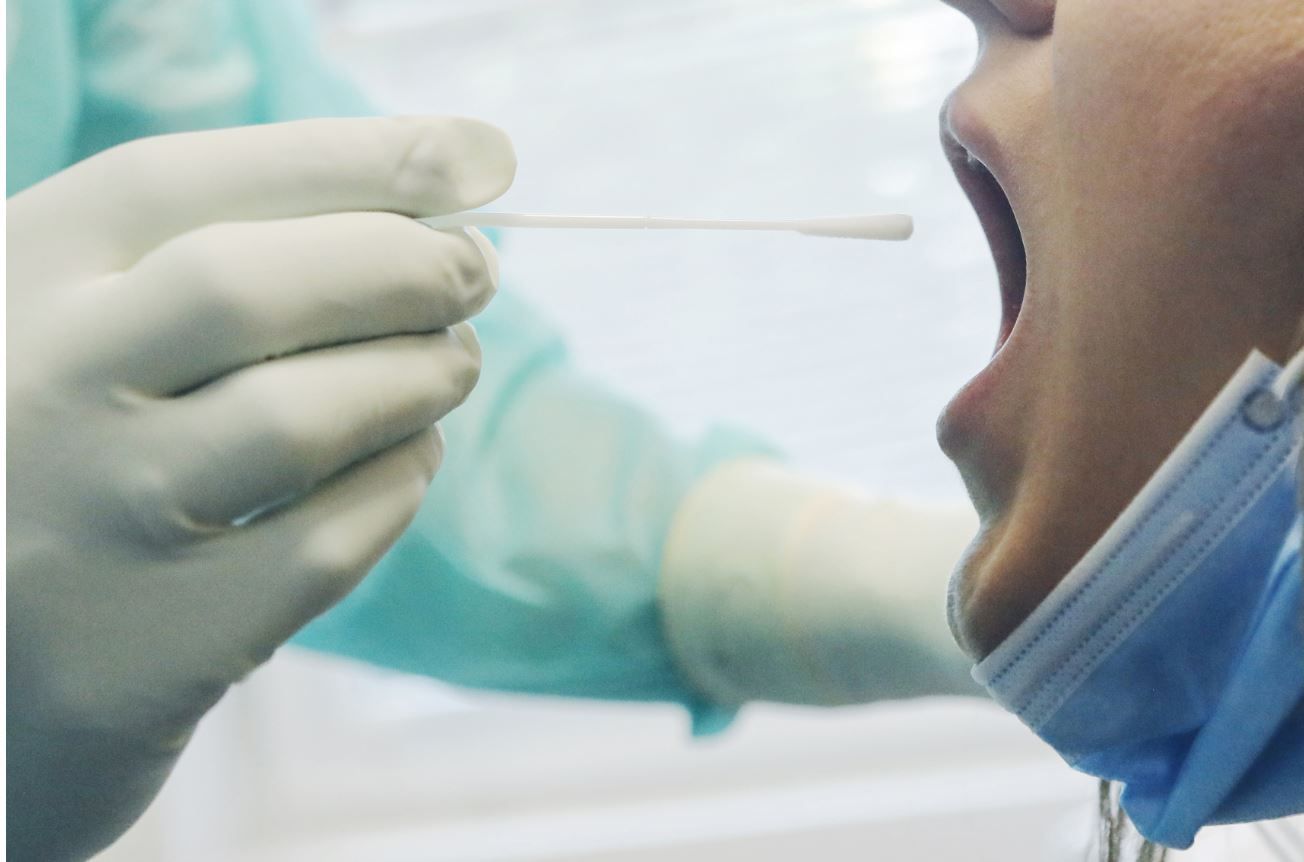Saliva may be Potential Route of SARS-CoV-2 Transmission, Recent Study Found
The findings suggest that the mouth and its saliva play an important, and perhaps underappreciated, role in SARS-CoV-2 infection and transmission.
©taramara/stock.adobe.com

Although COVID-19 is known to be a respiratory illness that affects the lungs, upper airways, and cells in other parts of the body, a recent study suggests SARS-CoV-2 also infects cells in the mouth.
The study—published in the journal Nature Medicine on March 25, 2021—was conducted by an international team of researchers led by Blake Warner, DDS, PhD, MPH, of the National Institute of Health (NIH) and Kevin Byrd, DDS, PhD, of the University of North Carolina at Chapel Hill.
Warner, Byrd, and colleagues were already aware that the saliva of COVID-19-infected individuals can contain high levels of SARS-CoV-2. Research has also shown that oral manifestations (ie, loss of taste, dry mouth, and oral lesions) are evident in approximately half of COVID-19 cases.
However, it remains unknown, the authors write, “whether SARS-CoV-2 can directly infect and replicate in oral tissues, such as the salivary glands (SGs) or mucosa.”
“This is critical because, if these are sites of early infection, they could play an important role in transmitting the virus to the lungs or the gastrointestinal tract via saliva, as has been suggested for other microbial-associated diseases, such as pneumonia and inflammatory bowel diseases,” continued authors.
To address this, researchers surveyed oral tissues from healthy people to identify mouth regions susceptible to SARS-CoV-2 infection. Vulnerable cells contain RNA instructions for making “entry proteins” that SARS-CoV-2 needs to enter and infect human cells.
The researchers found RNA for 2 key entry proteins—the ACE2 receptor protein and the TMPRSS2 enzyme protein—in certain cells of the salivary glands and tissues lining the oral cavity. In a small portion of salivary gland and gingival cells, RNA for both proteins was expressed in the same cells, according to an NIH press release.
Next, the researchers examined salivary gland tissues samples from people with COVID-19 and detected signs of SARS-CoV-2 in just over 50% of the samples. The samples included tissue from one person who had died from COVID-19 and another person living with acute COVID-19.
To determine if SARS-CoV-2 in saliva is infectious, researchers exposed saliva from 8 people with asymptomatic COVID-19 to healthy cells grown in a lab dish. Saliva from 2 of the participants led to infection of the healthy cells, raising the possibility that even asymptomatic individuals might transmit infectious SARS-CoV-2 to others via saliva.
Finally, to understand the relationship between oral symptoms and virus in saliva, researchers collected saliva from a separate group of 35 NIH volunteers with mild or asymptomatic COVID-19.
Of the 35 volunteers, 27 experienced mild COVID-19 symptoms and 8 were asymptomatic. Among participants who experienced symptoms, those with virus in their saliva were more likely to report loss of taste and smell, suggesting that oral infection might underlie oral symptoms of COVID-19.
Overall, these findings suggest that the mouth plays a more substantial role in SARS-CoV-2 infection and transmission than previously thought, according to study authors.
“When infected saliva is swallowed or tiny particles of it are inhaled, we think it can potentially transmit SARS-CoV-2 further into our throats, our lungs, or even our guts,” said Byrd in the press release.
Researchers also concluded that further research is needed to confirm these results in a larger population sample, and to determine the exact nature of the mouth’s involvement in SARS-CoV-2 infection and transmission.
“By revealing a potentially underappreciated role for the oral cavity in SARS-CoV-2 infection, our study could open up new investigative avenues leading to a better understanding of the course of infection and disease. Such information could also inform interventions to combat the virus and alleviate oral symptoms of COVID-19,” said Warner in the NIH press release.